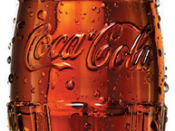Problems and Issues
This case describes the complexity of PepsiCo's competitive position in the Mexican soft-drink market during the late 1990's. Between 1993 and 1996 PepsiCo and Coca-Cola waged a classic cola war in Latin America. The goal for both companies was to gain market share and by the end of 1996, Coca-Cola had clearly won the Latin America cola war. In 1993 PepsiCo enjoyed a 42% market share in Venezuela thanks to the success of its bottling partner, the Cisneros Group but by the end of 1996, PepsiCo held less than 1% of the Venezuelan cola market. Following PepsiCo's anchor bottler in Mexico, Gemex, the case details the strategies employed by PepsiCo's senior management beginning in 1993 to expand its market share versus Coca-Cola. The various dimensions of PepsiCo's strategy -- marketing, management, financial, strategic - seemed to have deteriorated in the aftermath of the unexpected fall in the Mexican peso in December 1994.
Focusing on the financial implications of the peso devaluation, the case then describes PepsiCo's response, which only seemed to increase the financial burdens imposed on the faltering Pepsi market share.
Critical Analysis of the Issues
In 1993 PepsiCo was the second largest soft-drink company, after the leader Coca-Cola. That was the year when the "Latin Cola War" broke out. Both companies felt the Latin American market was under developed and saw many opportunities to succeed. In the beginning it seemed PepsiCo would be the winner of the competition, but after the depression in Mexico, and lack of capital problems in other countries, PepsiCo's market share fall. They lost their Venezuelan partner and their partner in Mexico was experiencing significant losses.
Below are five (5) issues I felt PepsiCo faced in Mexico:
1. PepsiCo's Strategy
PepsiCo entered the Latin American market with a...


